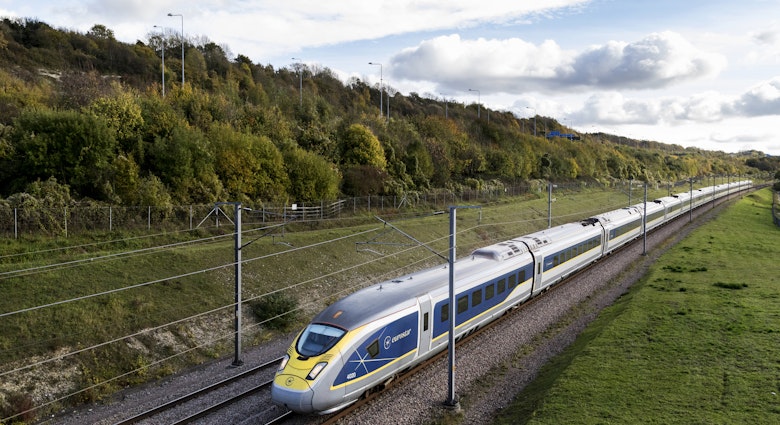
Jan 16, 2024 тЂ 8 min read

Jun 11, 2024 тЂ 4 min read

Board the European Sleeper in Brussels in the evening, and youтll be in Berlin in time for breakfast ТЉ Matthias Makarinus / Getty Images
The resurgence in sleeper trains across Europe and climate-change concerns has made the a hit.
Offering revived overnight service from Brussels, via Antwerp, Rotterdam and Amsterdam, to Berlin, and then on to Dresden and Prague, the Belgian-Dutch collective has passengers trundling across the continent on refurbished rolling stock first built in the т50s.
Hereтs one report from the rails between Belgium and the German capital.

The train left the station and traveled out over graffiti-covered bridges toward Flandersт open fields and forests. The absence of air conditioning made for a stifling ambiance in the sleeper compartments, which each contained a trio of made-up beds with heavy duvets, a single seat and table, and a hidden wash basin that opened like a drinks cabinet. A grunt and a shove got my window down a few inches т but most passengers stood in the corridor, relishing the rush of wind through one large open window and basking in the glow of the dipping sun as it bounced across waterways toward the city of Dordrecht, where windmills turned slowly, and houseboat masts lined up.
While there was no dining car on board, an attendant went back and forth taking orders for wine, beer, nachos and instant noodles (all reasonably priced). Having wolfed down a plate of boudin noir and mash at long-standing Brussels brasserie , I was sated and perfectly happy to wander about with a tube of Pringles under one arm and a can of European Sleeperтs own Weizen beer in hand. I chatted with passengers traveling in the couchette compartments (one that dogs and cats are also welcome in, provided private compartments are booked out).

Although couchettes (carriages with seats that convert into sleeping berths) are the far cheaper option (тЌ79) when compared with sleeper compartments (тЌ189), so ample was the space that the couchettes each felt like a small living room, with six or four comfortable berths topped with folded blankets, a sheet and a pillow. Here, the windows were shoved right down with wind blasting through as the train raced through the countryside (though the wind was billowing with so much pollen that antihistamines were being shared like sweets).
With little to do once the journey got underway, most passengers started swapping train stories. Some gathered to watch a football match being streamed on a laptop, while others drank as though the end was nigh. It felt like weтd gathered together for one night as a train family, comfortable with strangers т strangers, that is, who shared a mutual love of trains.

Darkness swept in after Rotterdam, and we drew into Amsterdam as brightly lit commuter trains flashed the other way and smart apartment buildings rolled by, curtains open to reveal residents working their desktops or reaching for books on shelves. Itтs this glimpse into other peopleтs intimacies that makes night trains so fulfilling: watching a cat pick its way across the top of an armchair, or a woman hugging a partner in their kitchen, oblivious to the watchful eye flashing past.
Stepping back from the window, I could smell a dwindling odor of wine and beer, and the final footsteps up the corridor signaled that everyone else had taken to their berths. While rattle-proofing the compartment, I noticed my neighborsт ladder thumping against the wall, as though someone was knocking at the door. And that was it for me.

The rest of the night was spent awake, pillow on head, wishing Iтd packed earplugs. Were it not for the torturous banging, the ride was smooth, even gentle. I dozed off in the small hours, waking at 5am in the town of Peine in Lower Saxony, where an anemic blue sky was beginning to turn orange, and an icy-looking mist hovered above the fields.
After snatching a couple more hoursт sleep, I woke to morning clamor on the approach to Berlin. As I rummaged through my breakfast box (included in the price of the ticket), I decided that it was a bit too early for crackers and Ardennes pУЂtУЉ. It was just before 8am, and those whoтd slept well were discussing heading straight into the city for breakfast to get a swift start on seeing the sights before the crowds.
Running Mondays, Wednesdays and Fridays, the train departs at 722pm, arriving in Berlin Hauptbahnhof just after 6am. The reverse journey runs on Tuesdays, Thursdays and Sundays, from Berlin to Brussels. Seats begin at тЌ49, couchettes at тЌ79 and sleepers at тЌ189. Pets and bikes can be accommodated. Book in advance .


Jan 16, 2024 тЂ 8 min read

Oct 19, 2023 тЂ 8 min read

Dec 9, 2022 тЂ 9 min read

Apr 28, 2022 тЂ 2 min read

Oct 21, 2021 тЂ 2 min read

Jan 3, 2021 тЂ 4 min read

Dec 10, 2020 тЂ 3 min read

Aug 27, 2020 тЂ 2 min read

Aug 20, 2020 тЂ 2 min read